1975 Roadless Ploughmaster 75 wonderfully restored
Posted by Chris Graham on 12th February 2024
Chris Graham meets Peter Matthewson and his newly-restored 1975 Roadless Ploughmaster 75 which spent its working life in the Falklands.
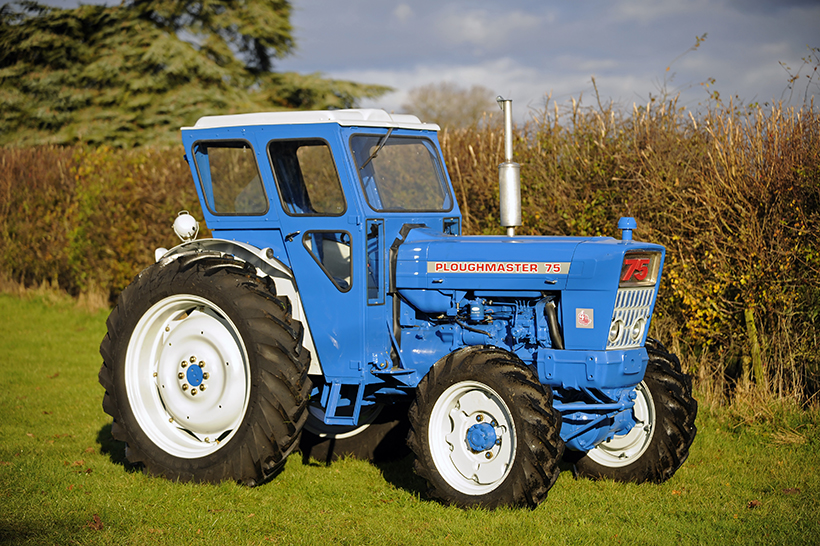
1975 Roadless Ploughmaster 75: Peter Matthewson’s recently restored tractor now represents a superb example of the four-wheel-drive model, which was converted by Roadless Traction Ltd using the Ford 5000 skid unit. Nearly 1,200 75s were built, between 1968 and 1975, and this is a very late example.
There’s no question that having some mechanical experience makes owning an elderly tractor a lot more manageable. Having said that, it’s not an essential requirement, and those looking to buy their first machine shouldn’t be put off by the fact that they lack hands-on skills or a well-organised home workshop.
The reality, of course, is that the sort of tractors we regularly feature in this magazine – built, say, between the Second World War and the late 1970s – don’t require expert attention to service and maintain them in reliably, usable condition. These machines were designed to cope with the vagaries of farming life, which, more often than not, involved a penny-pinching owner doing all he could to avoid ‘wasting’ any of his hard-earned cash on his over-worked and under-maintained tractor.
Inherent ruggedness
The likes of Fordson, Ford, County, Muir-Hill and Roadless tractors from the post-war, ‘classic’ era were typically over-engineered to a level that’s simply unheard of today. Components were designed with real solidity, ensuring they were utterly fit for purpose. But this was before the arrival of the corporate accountants and swanky CAD systems that, between then, began whittling away at raw material consumption and production costs in the relentless pursuit of profit.
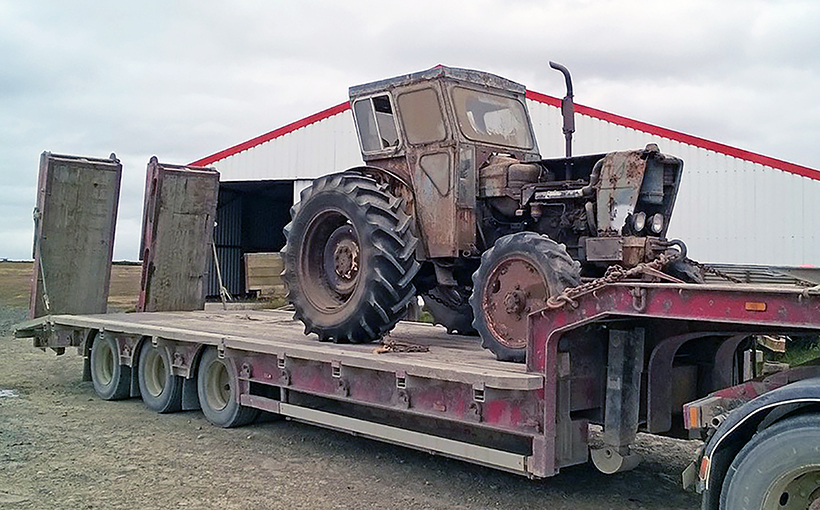
Here’s the tractor photographed on a low-loader at Goose Green, on East Falkland, just before it was transported back to the UK in 2016. It had been in the Falkland Islands from new, in 1975.
Back in the day, tractors were routinely produced with an inherent ruggedness that not only ensured reliability, but also allowed those machines to work on through long periods of mechanical neglect. The manufacturers understood the on-farm reality of the day, and appreciated that their tractors had to be capable of coping with such treatment if reputations were to be maintained.
The tractor we’re spotlighting here – Peter Matthewson’s 1975 Roadless Ploughmaster 75 – epitomises that sense of mechanical strength and durability. As you’ll see, it withstood over four decades, thousands of miles from home, exposed to an extremely harsh maritime climate and a level of arms-length service support which must have been sketchy at best. Nevertheless, the tough old machine survived, and was still running when it arrived back here in the UK eight years ago… just!
Big machinery fan
Peter started gaining practical tractor experience at a young age, having grown up on the farm on which his father worked. Then, when he left school in 1975, he went straight into an engineering apprenticeship with Ford, then worked on tractors for the following four years. “After that, I switched to grain store work,” he explained, “and then had a spell driving diggers. But farming’s always been in my blood, although my working life has been based around the use, repair and maintenance of big, heavy machinery.”
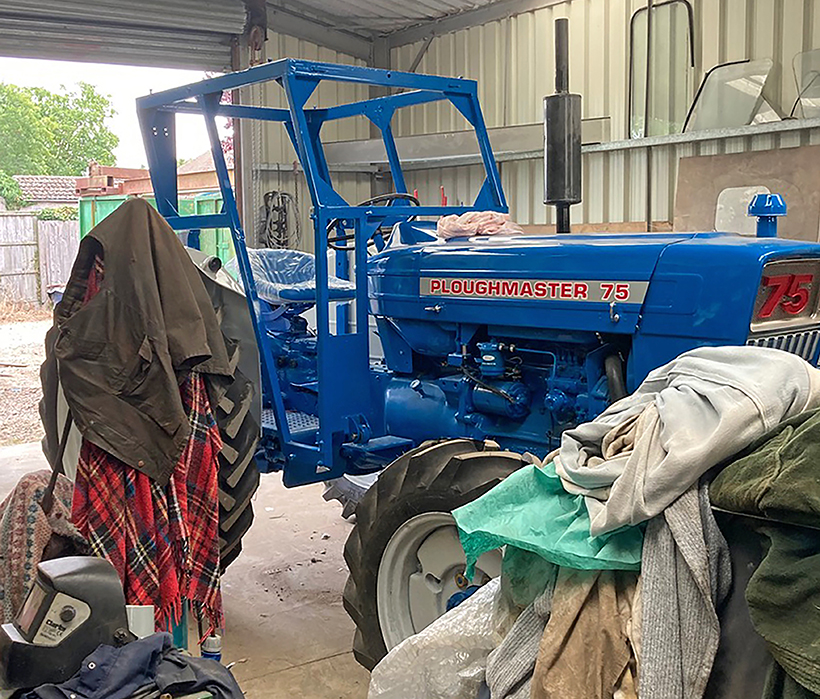
Peter covered all aspects of the 75’s restoration himself, including the paint spraying. The Duncan cab that was supplied with the tractor was too rotten to save, although virtually all the original glass was good enough to re-use.
Following a few years spent living in Derbyshire and working on heavy plant, Peter returned to Suffolk in 1991, and started his own digger hire and groundworks business, which he’s been running successfully ever since. But, despite not working directly with tractors nowadays, his enthusiasm for them remains undiminished.
“I’ve had one project or another on the go for about as long as I can remember,” he said. “The first tractor I had arrived when I was 16, and it was an Allis Chalmers Model B. But my dad always worked with Fords and Fordsons, and I remember him using Majors and a Ford 4000 on the farm as I was growing up. So that, plus my apprenticeship with Ford, means that I’ve always had a soft spot for the blue machines, and have owned many different models over the years. At the moment I have a collection of about 20 tractors, in various states of repair; some I’ve fully restored, others are yet to be touched.”
First restoration project
“The first tractor I bought and restored was a 1937 Fordson Standard N, which I got in 1998 and still own today. The restoration side of things didn’t faze me, even then, as I’d been tinkering with tractors and other machinery for years. That project probably took the best part of five years to finish, working odd evenings and at weekends when I could find the time.
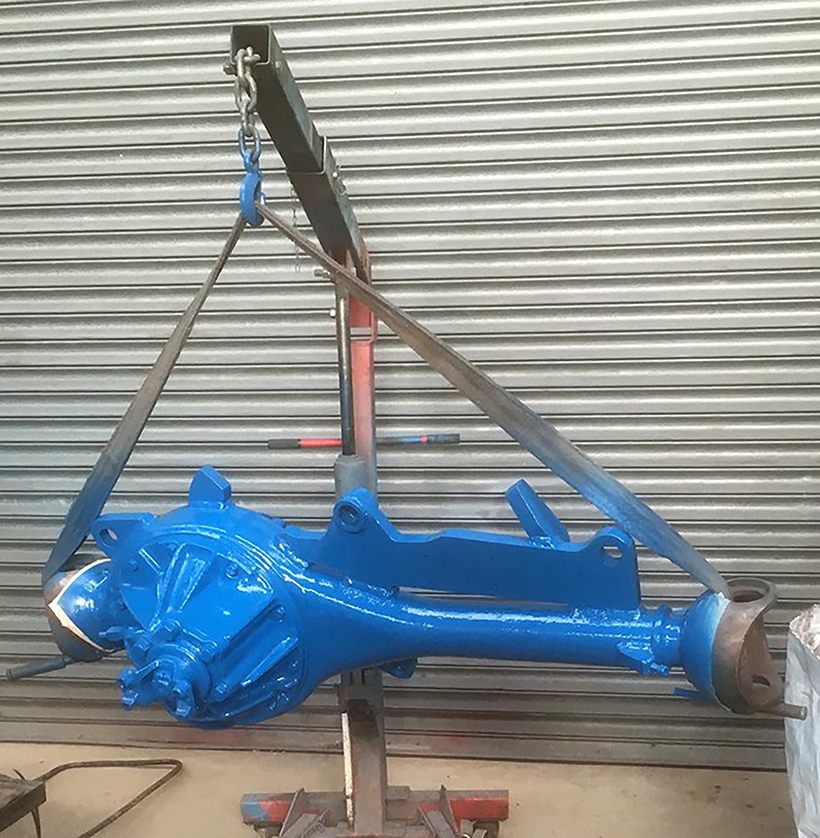
The front axle was completely rebuilt, with new drive shafts, bearings and seals needed to replace the worn-out originals.
“The next one I tackled was a Fordson Major Selene four-wheel-drive, which I bought from a Cheffins sale in 2012. I hadn’t really been looking for that particular model, but spotted it while at the sale and, as it didn’t seem to be attracting much attention from bidders, I nipped in and bought it! I had an uncle who did timber work with a Major, and gained a lot of practical experience with that tractor. I’ve always been a fan of the model. Like the N, the Major required a full restoration, but ended up being a lot easier to start, so I attended more shows with that one. The Standard tends to suffer from ‘rally fever’. It’ll start time after time when it’s here at home. But take it to a showground and everything changes; it becomes all but impossible to get going!”
It was then that the Roadless Ploughmaster 75 entered the picture, and Peter has his nephew to thank for finding it. “He used to help me often on Saturdays, and also spent lots of time searching the internet for interesting project possibilities. One day, he stumbled upon somebody who was bringing a consignment of equipment back from the Falkland Islands in a container, and this included a couple of Roadless Ploughmaster 75s. This was another of those ‘completely by chance’ finds, and the opportunity just came along at the right time. I bought one of the pair, thinking that it would be something a bit different, and an interesting new project to get my teeth into.”
Just about running
“The tractor arrived back in the UK in 2016, and I didn’t really know what to expect with regard to its mechanical condition. I’d seen a few photographs and, although it appeared to be quite rough, it looked complete. As it turned out, the engine ran on three cylinders for just long enough to manoeuvre it off the trailer. The whole thing was clearly in a pretty sorry state, and my initial impression was that it had been used quite hard during its working life. What’s more, the harsh climate in the Falklands had also evidently taken its toll.”
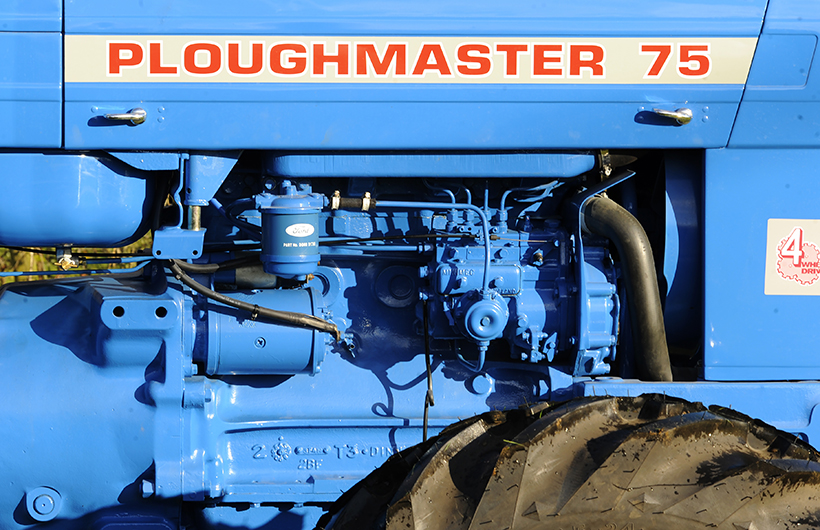
The original engine was in a bad way, so Peter swapped it with one he’d salvaged from a digger, having fitted that with new liners and pistons, a re-ground crank, plus a replacement injector pump and new injectors.
Unfortunately, Peter hasn’t been able to find out much about the Ploughmaster’s history, other than the fact that it went out to the Falklands as a new tractor on May 27th, 1975. “It’s not clear if it went to a farmer there, or whether it was sent out as part of a Government order,” he added. “Perhaps a reader will be able to throw some light on the tractor’s past. It’s been suggested to me that it was used primarily for grass-cutting, but I can’t be sure about that.
“The original Duncan cab it was fitted with had to be cut off so that the tractor would fit into the shipping container, and I was given that as a separate item at the time of purchase. Of course, that may have been the cab from the other Ploughmaster in the consignment, although that doesn’t really matter now as I had to replace the one I got, anyway.
“As you might imagine, the tractor required a full restoration. The engine block was porous; it would run but you could see the water percolating out through the sides! So I decided to swap it with a unit that I’d salvaged from an old digger. I fitted that with new liners, new pistons, re-ground the crankshaft, bought a replacement injector pump and set of injectors. The back axle and gearbox were completely rebuilt, replacing all the bearings; everything inside was showing signs of significant wear, so had to be replaced.”
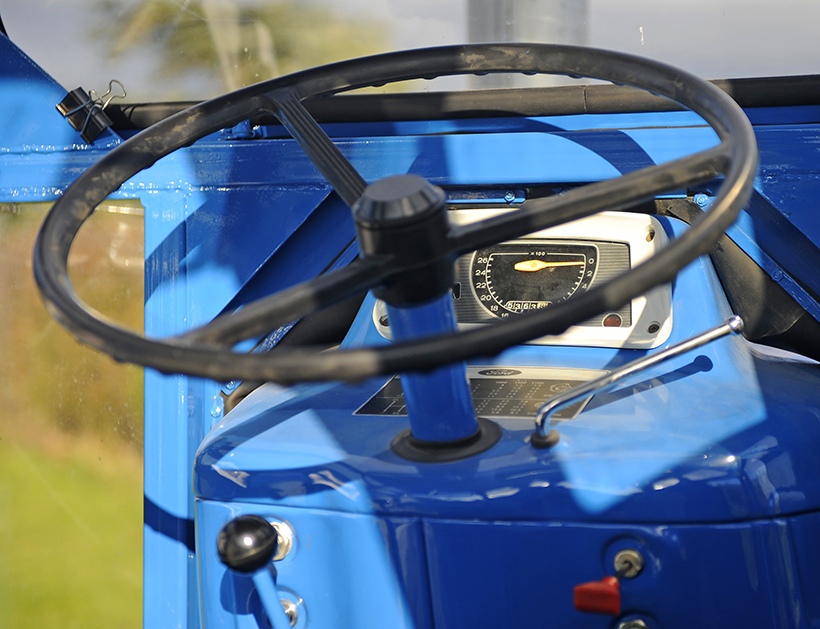
Instrumentation and controls were unchanged by Roadless, so are just as you would find on a Ford 5000.
Perfectly serviceable
“Amazingly, the brakes were in quite good order and, after little more than a thorough clean, proved to be perfectly serviceable. There were no problems with the hydraulics, either, although, at the front end I had to fit new driveshafts, bearings and seals to bring that axle up to scratch. Looking at the state of the wheels – which were badly corroded – I’m wondering if the tractor spent its more recent years on the beach, perhaps helping with the launching and recovery of boats?
“As I hinted at earlier, the cab that came with the tractor was quite rotten, especially the back panel, so I decided that it simply wasn’t recoverable and opted to switch it for a better one. I found a frame being sold on the Roadless Facebook page by somebody who’d just finished a 75 restoration and, handily, he had some doors to sell, as well. Everything had to be shot-basted and, in the end, I needed to make myself a new door. I also got a specialist engineering company to fabricate the new rear window frames for me, but did manage to salvage and re-use virtually all the cab’s original glass. Some panels were a little scratched in places, but nothing bad enough to prevent it from being used again.
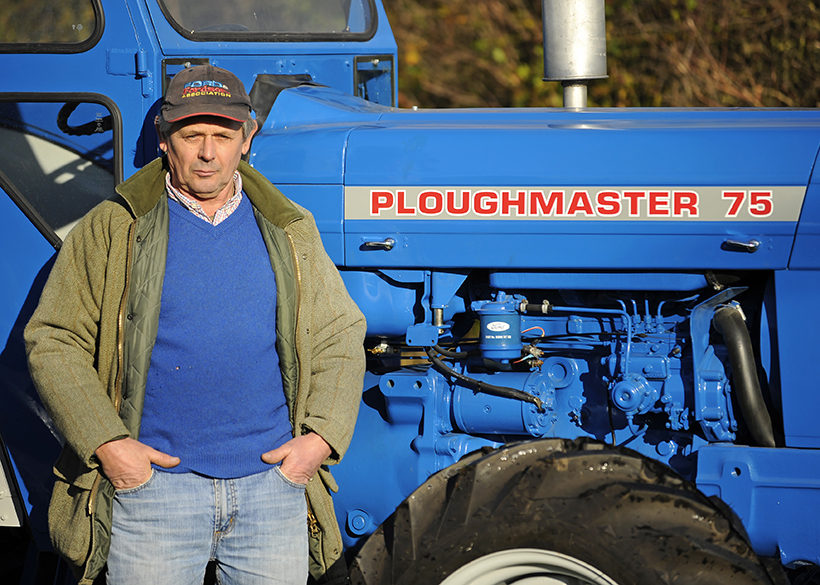
Peter Matthewson currently owns a couple of other Ploughmaster 75 restoration projects, and both are currently for sale. He can be reached by emailing: petermatthewson@yahoo.com if you’re interested.
“It was probably the restoration of the cab that represented the hardest part of the whole process. It took much longer than I was expecting; you don’t realise how much there is to it until all the component parts are spread out on the workshop floor! Lots of the bolts weren’t reusable and all the rubbers were shot, so hand-made replacements were needed. I sprayed everything on the tractor myself, using a modern two-pack paint.”
Finally finished
Peter completed the Ploughmaster’s restoration late last summer, so hasn’t had much of a chance to use it yet. “Its first outing was to the Grand Henham Steam Rally near Southwold, in Suffolk,” he explained, “then, in November, I took it to the Newark show, although that wasn’t all plain sailing. While the tractor was on the lorry on the way to that event, one of the cab doors was flipped open by the wind, and the edge put a dent in the side of the bonnet, chipping the fresh paint.
“Luckily I was able to buy a pot of touch-up paint and a brush from one of the stalls at the show, and could disguise the damage somewhat, but that was very disappointing. Fortunately, there was no damage to the door, its hinges or the cab frame, and the tractor itself was well received by everyone who spoke to me about it.”
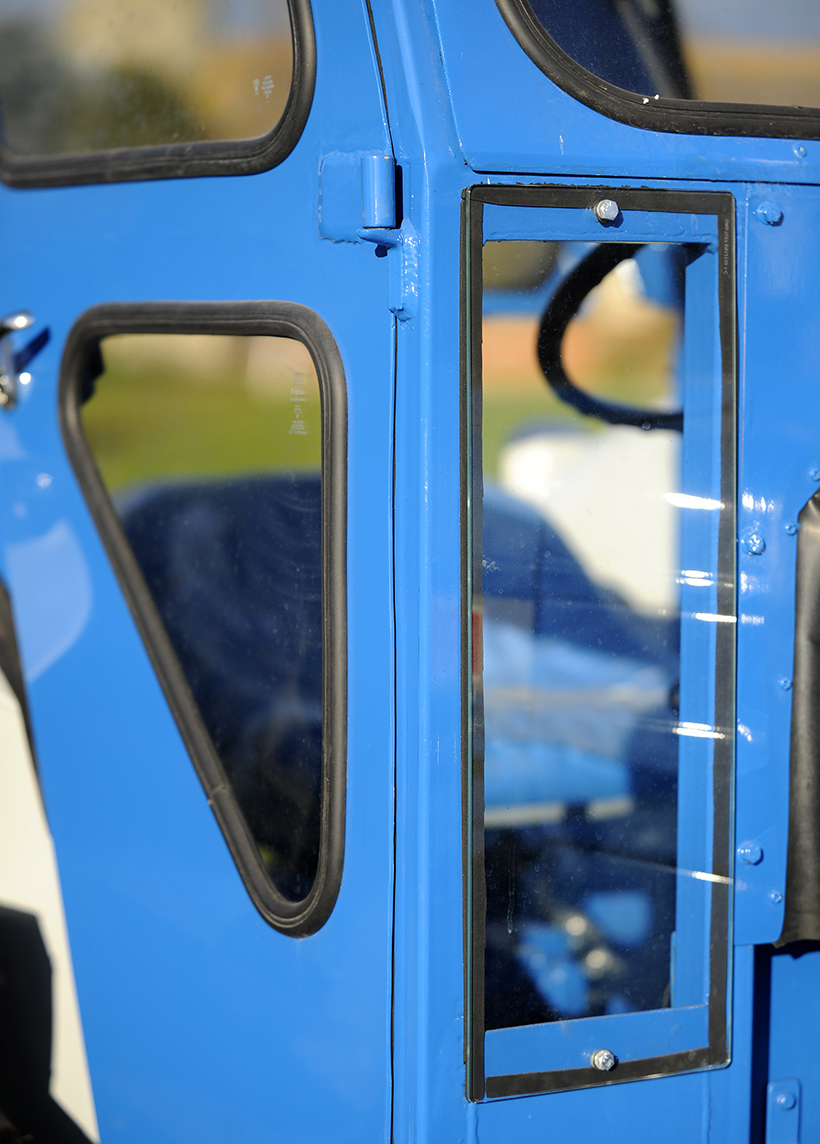
This vertical panel is the only non-original piece of glass in the Duncan cab.
As for the future, Peter isn’t entirely sure about what to do with the 75. “I think it’ll certainly make a good ploughing machine,” he told me, “so I may have a go in a few competitions. Alternatively, I might simply sell it if somebody wants to make me a sensible offer that reflects the time and parts I’ve put into the project. In all honesty, I could probably have saved myself some money (and a lot of time) by buying an already restored example, but I think I enjoy the restoration process more than having the finished tractor!
“I’m well aware of the need to use it, though; tractors hate sitting around and only being run occasionally. They’ll soon start blowing oil out of the exhaust if that’s all the use they get. So I plan to use it for a few tractor road runs, especially as it has a cab. It’s quite a nice tractor to drive on the road, although it’s certainly noisy. It’s hot, too. If the sun’s out, it’s just like sitting in a greenhouse, which makes you have some respect for those who had to work an eight-hour summer shift in them, back in the day.
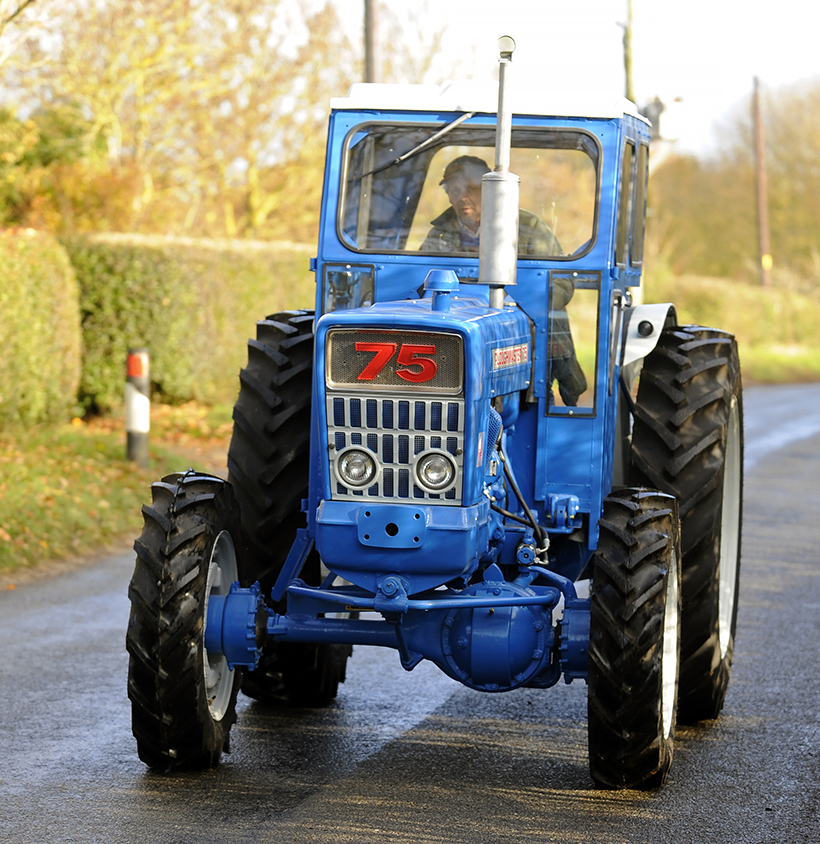
Peter enjoys driving the Ploughmaster, despite the noise and heat inside the cab. He hopes to use it on tractor road runs this year, as well as putting it to work with a plough.
“I’ve got a Thames Trader lorry, which is an ongoing renovation project that I started a long while ago, so that needs finishing. I’ve also got a Roadless Major, a P6-engined Major and a 1969 Roadless 65, all three of which are in need of full restorations. So I’m not short of things to be getting on with. I enjoy the challenges you encounter during projects like these, and overcoming the problems that inevitably arise.
“I’m just as enthusiastic as ever about new projects but, as always, it comes down to how well I’m able to juggle my time. I’m quite good at not putting myself under pressure to get the projects finished these days, which is important. If I don’t feel I have time to fit a tractor-related job into my schedule, then I simply won’t do it.
“I think it’s far better to put off that work until you have a proper amount of time to do it and, as a result, you’re in the best possible frame of mind to tackle it well. The last thing you want is to turn the operation into a chore; there’s no quicker way of draining the pleasure from it than that. It’s all about striking a balance between your tractor hobby and all the other important aspects of day-to-day life.”
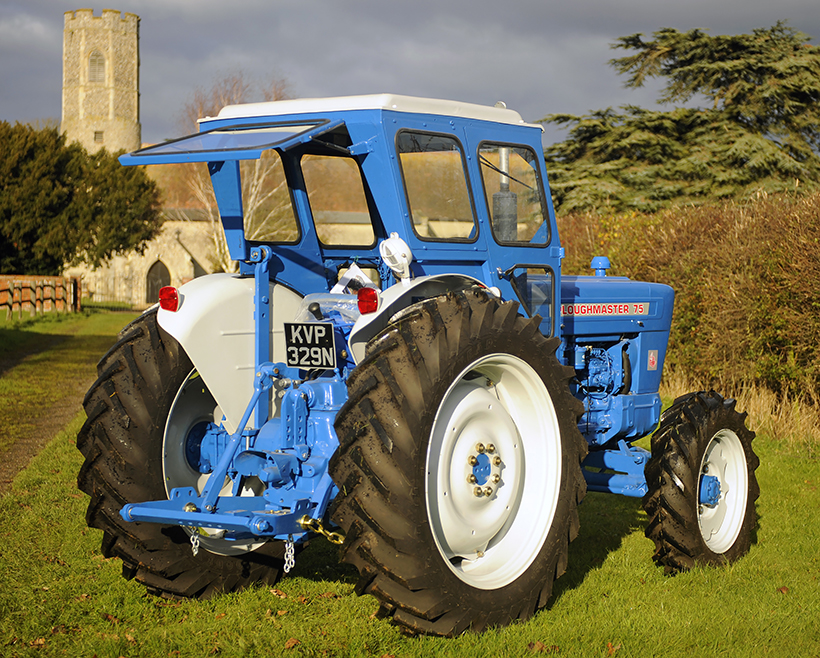
The hydraulics remained in remarkably good condition and required little work during the restoration. The original wheels, though, were badly corroded, so had to be replaced.
Peter’s spot-on, there. We all know how addictive tractor ownership can become and, for those into the restoration side of the hobby, the process can become even more ‘overpowering’. But, finding a satisfactory middle way that straddles the divide between tractors, relationships, family life and friends is essential for keeping everything on an even keel which, after all, is what it’s all about.
This feature comes from the latest issue of Ford & Fordson Tractors, and you can get a money-saving subscription to this magazine simply by clicking HERE
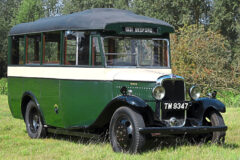
Previous Post
This 1931 Bedford bus was the first of its kind!
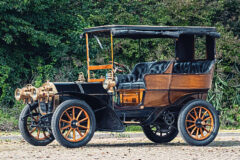
Next Post
The Golden Age of Motoring Sale



